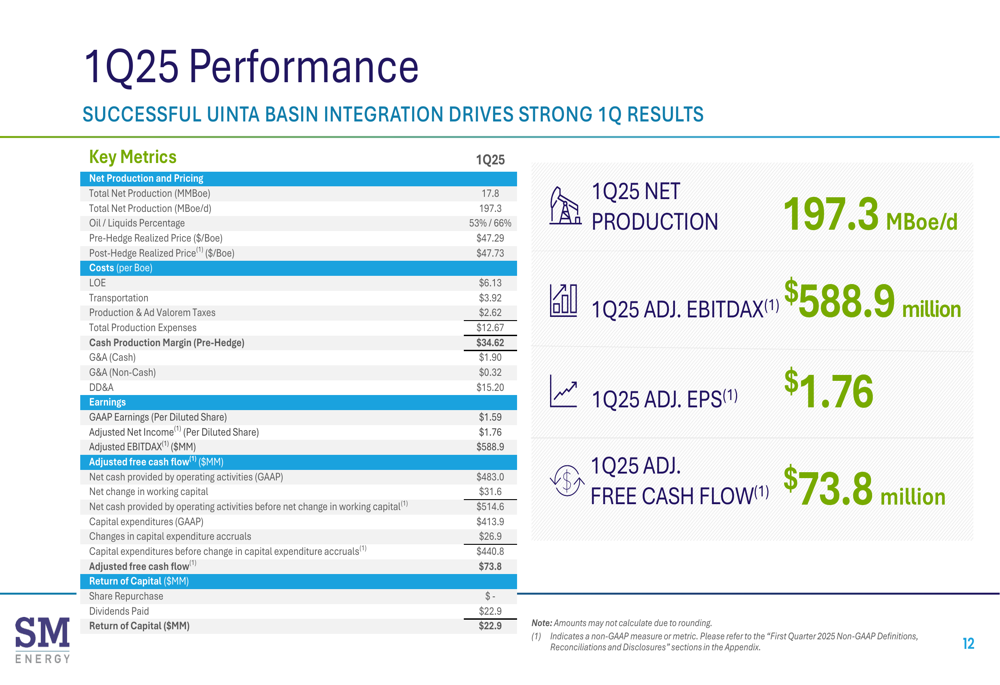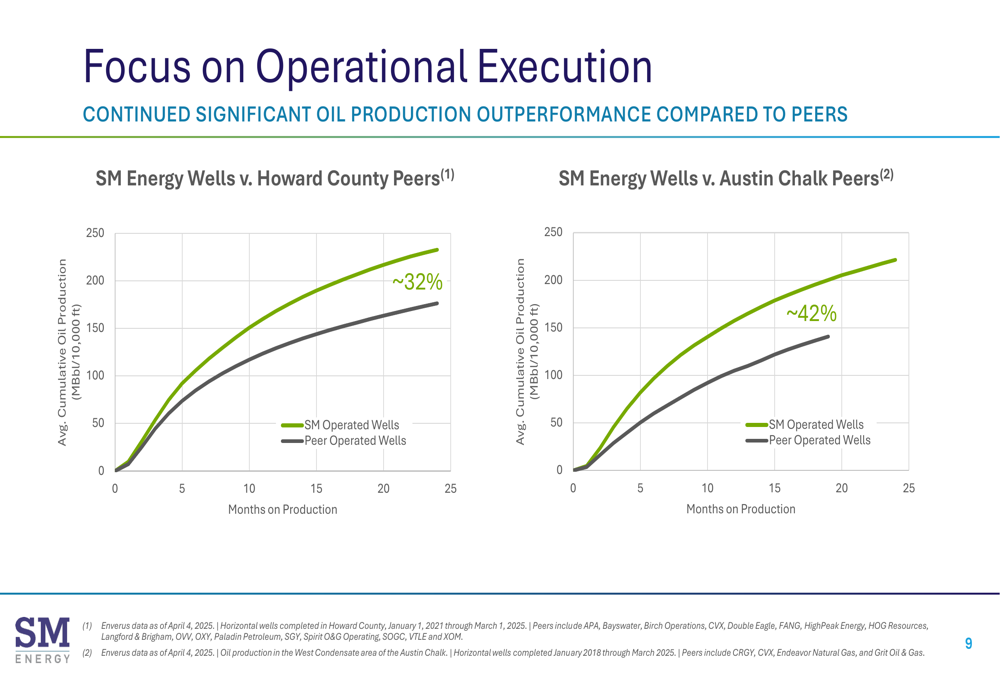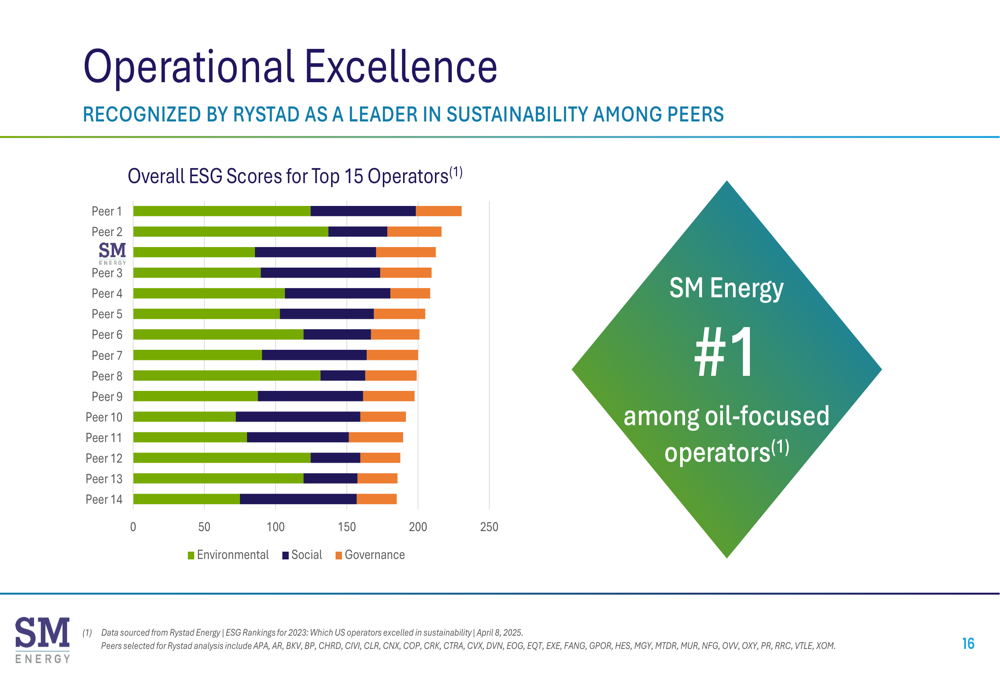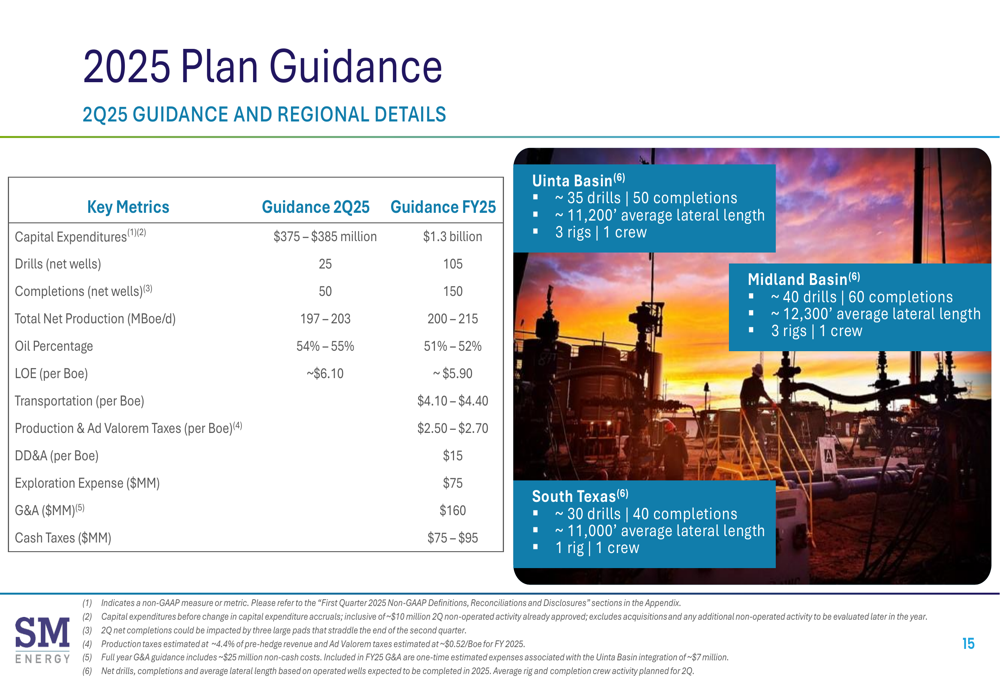US stock futures flounder amid tech weakness, Fed caution
Introduction & Market Context
SM Energy Co (NYSE:SM) released its first quarter 2025 financial and operating results on May 1, highlighting strong operational performance across its three core basins. Despite reporting adjusted earnings per share of $1.76, beating analyst expectations of $1.54, the company’s stock has struggled to gain traction, trading at $23.16 after experiencing a 4.92% drop following the earnings announcement.
The oil and gas producer, which operates in the Uinta Basin, Permian Basin, and South Texas, continues to focus on operational execution, capital efficiency, and debt reduction while maintaining its commitment to returning capital to shareholders through dividends and potential share buybacks.
Quarterly Performance Highlights
SM Energy reported production of 197.3 MBoe/d for the first quarter, reaching the high end of its guidance range with oil comprising 53% of total production. The company generated adjusted EBITDAX of $588.9 million and adjusted free cash flow of $73.8 million.
"We are delivering on our core strategic objectives for 2025," said the company in its presentation, pointing to successful Uinta Basin integration, continued debt reduction, and expansion of its drilling inventory.
As shown in the following comprehensive performance summary:

The company’s average realized price (post-hedge) was $47.73 per barrel of oil equivalent, while keeping production expenses in check at $12.67/Boe. These results supported the company’s adjusted earnings per share of $1.76, which exceeded the forecasted $1.54 according to the earnings report.
Operational Excellence Across Basins
SM Energy highlighted its operational outperformance compared to peers, particularly in its Howard County (Permian) and Austin Chalk (South Texas) assets. The company’s wells are outperforming peers by approximately 32% in Howard County and 42% in the Austin Chalk in terms of oil production.
The following chart illustrates this competitive advantage:

In the Uinta Basin, where SM Energy has been focusing on integration following recent acquisitions, the company reported strong initial production results. Six Lower Cube wells averaged 1,193 Boe/d per well with 91% oil content. Similarly, in South Texas, four Austin Chalk wells averaged 1,061 Boe/d per well with 55% oil and 78% liquids content.
The company’s Uinta Basin integration has been particularly successful, with Enverus Intelligence Research noting a "material shift" in their view of SM Energy’s inventory position. According to the presentation, Enverus added 57 sub-$50 breakeven locations in the Uinta Basin Upper Cube Douglas Creek formations.

Balance Sheet and Capital Allocation
SM Energy continues to prioritize debt reduction, decreasing its debt by $31 million in the first quarter. The company reported a net debt-to-adjusted EBITDAX ratio of 1.3x, moving toward its target of 1.0x leverage. With $2.0 billion in liquidity and net debt of $2.8 billion, SM Energy maintains a strong financial position despite market challenges.
The following chart shows the company’s debt maturity profile and key financial metrics:

The company paid a quarterly cash dividend of $0.20 per share in Q1, representing an annual dividend of $0.80 per share. SM Energy also reaffirmed its borrowing base and lender commitments at $3.0 billion and $2.0 billion, respectively.
During the earnings call, CFO Wade Purcell highlighted the company’s ability to generate substantial free cash flow even at $55 oil prices, though the earnings article noted that the company’s current ratio of 0.55 indicates some liquidity challenges that management aims to address through continued debt reduction.
Technology and Sustainability Leadership
SM Energy emphasized its commitment to technological innovation and sustainability in its presentation. The company has been recognized by Rystad as a leader in sustainability, ranking first among oil-focused operators in ESG performance.
The following chart illustrates SM Energy’s sustainability leadership position:

The company is leveraging various technologies to drive operational efficiencies, including machine learning algorithms, computer vision, robotic process automation, and generative AI. These technological initiatives are contributing to cost savings and operational improvements across all three basins.
Forward Guidance and Strategic Focus
SM Energy maintained its full-year 2025 guidance, projecting total net production of 200-215 MBoe/d with oil comprising 51-52% of the total. For the second quarter, the company expects production of 197-203 MBoe/d with 54-55% oil content.
The company outlined its capital expenditure plans for 2025, with $375-385 million allocated for Q2 and a total of $1.3 billion for the full year. This aligns with the information provided in the earnings article, which noted that the company plans to increase oil production by 30% in 2025.
The following guidance details SM Energy’s operational plans for the remainder of 2025:

Looking ahead, SM Energy is focused on three core strategic objectives: operational execution to deliver high-return wells, returning capital to stockholders through dividends and debt reduction, and expanding its portfolio of top-tier economic drilling inventory.
Despite the company’s operational success and strategic focus, investor sentiment remains cautious, as evidenced by the stock’s performance. According to the earnings article, SM Energy’s stock has experienced significant volatility, with a high beta of 3.76 and a sharp decline of over 40% in the past six months, suggesting that broader market conditions or sector pressures may be influencing investor perception beyond the company’s fundamental performance.
Full presentation:
This article was generated with the support of AI and reviewed by an editor. For more information see our T&C.
